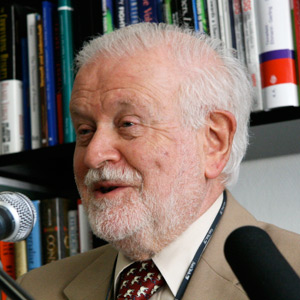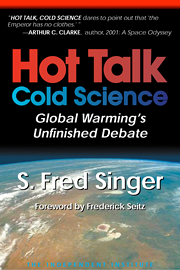Cap and trade (C&T) is in the news again: Global Carbon Market trading (practically all EU) climbed to $176 billion in 2011 according to the The World Bank, which has just released its annual State and Trends of The Carbon Market in 2012. That makes it about the same value as total global wheat production—which supplies about 20% of the calories consumed by the 7 billion people on planet Earth.
Meanwhile in Sacramento, CA, passage of Assembly Bill 1532 on May 29, signals a shift from regulation of air pollution to an outright war on business and industry in California. And in Los Angeles, the Cal Air Resources Board (CARB) is moving to implement a state-wide C&T scheme by Jan 2013 that will be like a carbon tax, yielding annual revenues of about a billion through the auctioning of emission permits
In New Jersey, the Natural Resources Defense Council (NRDC) and Environment New Jersey filed a lawsuit on June 6 complaining that Gov. Chris Christie’s exit from the Regional Greenhouse Gas Initiative didn’t give the public any chance to comment. Last year, Christie vetoed legislation that would have kept NJ in the climate initiative.
C&T explained
C&T refers to a system of pollution control that received great notoriety in 2009 in the Waxman -Markey bill. This monstrosity barely passed the House in a close vote along partisan lines. At the last minute, the sponsors added 300 pages to the 1,100-page bill, which hardly anyone had read before voting. I still recall then-Minority Leader John Boehner actually reading from the 300 pages on the House floor, trying to stall the vote. The U.S. Senate, wisely, refused to consider the bill and so this monstrous piece of legislation, a centerpiece of Obama’s climate/tax policy, died a quick death.
In general, however, a C&T scheme is much favored by economists over “command & control” because it provides a lowest-cost approach to reduce the emission of a pollutant. If one has a fixed target for ambient air quality and emitters facing diverse mitigation costs, it makes sense to have them trade emission rights; it will result in the lower-cost emitters applying controls before it causes higher-cost emitters to do likewise. In essence, one constructs a supply curve, familiar to every student of economics, plotting cost against amounts emitted, showing a gradual rise, followed a by steeper rise as the target level is approached. The result: less waste of resources and increased societal benefits.
It is well-known that C&T and pollution taxes are in some sense equivalent ways of controlling emissions. In the case of C&T, one knows the total amount that can be emitted, which is set by the cap; but one doesn’t know the cost beforehand. In the case of energy taxes, one can estimate the total cost but doesn’t know how much emission reduction will actually take place.
C&T was first applied to control sulfur dioxide (SO2) emissions from various sources, including smelters and electric power plants burning coal. Smelters for copper and other minerals emit copious amounts of sulfur dioxide; so it make sense for them to establish controls at relatively low cost and then sell emission rights to electric utilities that face a much higher control cost per ton.
In defending his C&T scheme for CO2, President Obama often reminds us that two decades ago, then-President George H.W Bush backed such a cap-&-trade program, targeting acid rain; it was meant to reduce SO2 emissions by a fixed amount. The measure overwhelmingly passed Congress as part of the 1990 amendments to the Clean Air Act (CAA). The Hill:
“Cap-and-trade was originally proposed by conservatives and Republicans as a market-based solution to solving environmental problems,” Obama said during a fiery speech at a luncheon hosted by The Associated Press. [...] “The first president to talk about cap-and-trade was George H.W. Bush. Now you’ve got the other party essentially saying we shouldn’t even be thinking about environmental protection.”
But C&T for CO2 is different
But Obama’s comparison is specious. C&T for controlling SO2 did achieve a certain amount of success, being applied regionally or nationally. However, C&T applied to carbon dioxide (CO2) is a different kind of animal and has become highly controversial. There are several reasons for that.
1. SO2 is a true pollutant, as set out by law in the Clean Air Act. CO2, however, is not a pollutant and will remain so unless or until the EPA can demonstrate that it is “harmful to human health and welfare.” EPA is now attempting to this through its 2009 Endangerment Finding (EF), currently being litigated. A decision by the Court of Appeals for the District of Columbia is expected within weeks. (Full disclosure: I am on the plaintiff team, hoping to demonstrate that EPA’s EF lacks any scientific base: i.e., that CO2 is not a pollutant at all.)
2. In the case of SO2, the desired ambient atmospheric level—and therefore, the “cap”—is set by a cost-benefit analysis of health effects and can be established in advance. On the other hand, the cap for CO2 is not fixed but is viewed by its proponents as subject to downward revisions as politics will permit.
3. Even worse, there has been talk about setting “flexible caps” for CO2—in case the control costs become too burdensome. This is an open invitation for political meddling to Congress, and of course to lobbyists, to adjust the cap according to political considerations.
4. But there is a more fundamental difference: SO2 is regional, and can be managed within the U.S. or Europe: CO2 is truly global and therefore outside of purely national control. How would EPA enforce—or even decide on NAAQS (National Ambient Air Quality Standards)? The misguided Kyoto Protocol never even considered an international scheme of C&T.
What has actually happened with CO2 trading can be seen from the European experience. There, carbon allowances were given to various industries and utilities for free, without any auction—and of course without any revenue to the national treasuries. Additional permits then had to be bought, and there was great activity among brokers and exchanges to profit from such trades. The actual experience has been quite disappointing. The price of carbon permits has fluctuated violently and has trended downward recently—to the extent that carbon exchanges have gone out of business and there is no active market at the present. Part of the problem has been the economic downturn. For example, in the United States carbon emissions have decreased by 2 percent per year in the last 3 years.
With its relentless, ideological war against coal by the activist EPA, the percentage of coal-fired power plants has decreased substantially, from 51% to 42%, and is still trending downward, as power plants fired by lower-cost natural gas are taking over. Natural gas also emits roughly half as much CO2 as coal per kilowatt-hour. The new stringent mercury rule proposed by EPA is already causing old coal-fired power plants to close. And proposed CO2-emission limits would even prevent the construction of new plants in the U.S.
Elsewhere the opposite is happening. For example, since Germany has decreed that nuclear plants must close, coal-fired power-plants are being built at rapid pace. And of course, China has been building such plants at the rate of one per week for some time now, paying little attention to the control of genuine toxic pollutants. As a result, global atmospheric CO2 levels are increasing but will increase more rapidly as the world economy recovers—no matter what the EPA decrees.
A historical note:
In 1982, I was part of a small panel of experts set up by White House science adviser Dr George Keyworth to make recommendations about SO2 emission problems. At that time, the acid-rain issue was in full swing and was causing some friction with Canada, our neighbor to the North. The panel was chaired by Dr. William Nierenberg and had on it some rabid acid-rain activists, supported by EPA grants and contracts.
I recall proposing a C&T scheme for SO2, but met great opposition from these activists. A compromise was reached by chairman Nierenberg: my C&T proposal would not appear in the panel report but in an Appendix, to be signed by me. Even though it was obvious that C&T would provide the lowest-cost solution nationally, the activists on the panel just couldn’t stomach the idea that utilities would be permitted to emit SO2 as before by simply buying emission rights. In their thoroughly a-historical and un-scientific book Merchants of Doubt, the authors Oreskes and Conway take me to task about this C&T proposal as a defender of the industries involved.
Yet MoD gives me credit (or blames me) for inventing the trading of emission rights under a fixed cap of total emissions (see pp. 91-93). I had never claimed any kind of priority (a dubious honor, anyway) because I honestly don’t know if this idea had been published anywhere. It just seemed like the natural thing to suggest in order to reduce total cost—once an emission cap had been set. My example involved smelters that emit SO2 copiously versus electric utilities that burn coal. I even constructed what amounts to a “supply curve” in which the bulk of the emission control is borne initially by the lowest-cost units.
It is ironic that these same activists who then ideologically opposed C&T for SO2 are now clamoring for C&T to control emissions of CO2—a pointless, counterproductive, and very expensive exercise.









